Stuart and Rebecca Mayhew, Old Hall Farm 1/3
About the farm
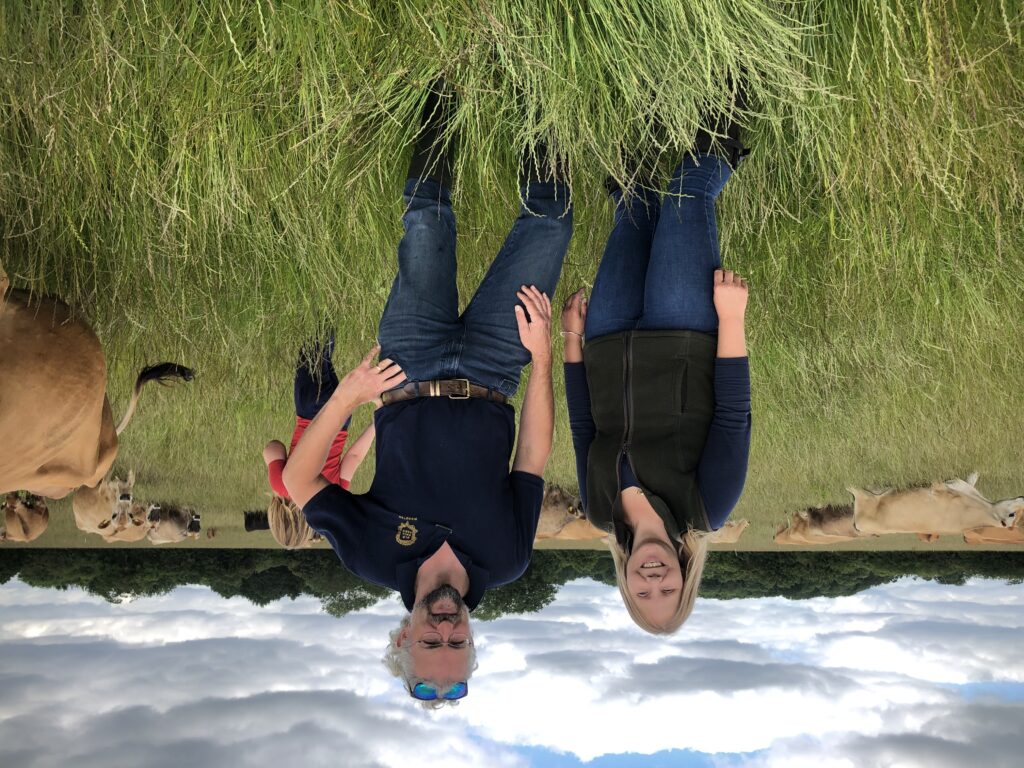
Old Hall Farm is located just south of Norwich on the Norfolk/Suffolk border, on the edge of the Waveney Valley, in the heart of an area also known as the “Waveney Valley Claylands”. The farm is 500 acres in total, mainly owner-occupied, with 125 acres being let on an Agricultural Holdings Act Tenancy. Old Hall Farm, which was on the edge of the main holding, was purchased in 2016 in order to enable us to diversify the farming business.
The land is Grade 3, Beccles Series, and classed as “slowly permeable seasonally wet acid loamy/clayey soils”. Annual rainfall over the last 3 years has averaged 600mm - although the seasons are becoming more extreme. Very little rain has fallen during the spring and summer months, with the majority falling between November and February. The farm runs North/South and is gently undulating, but only rises to 35m above sea level at it’s highest.
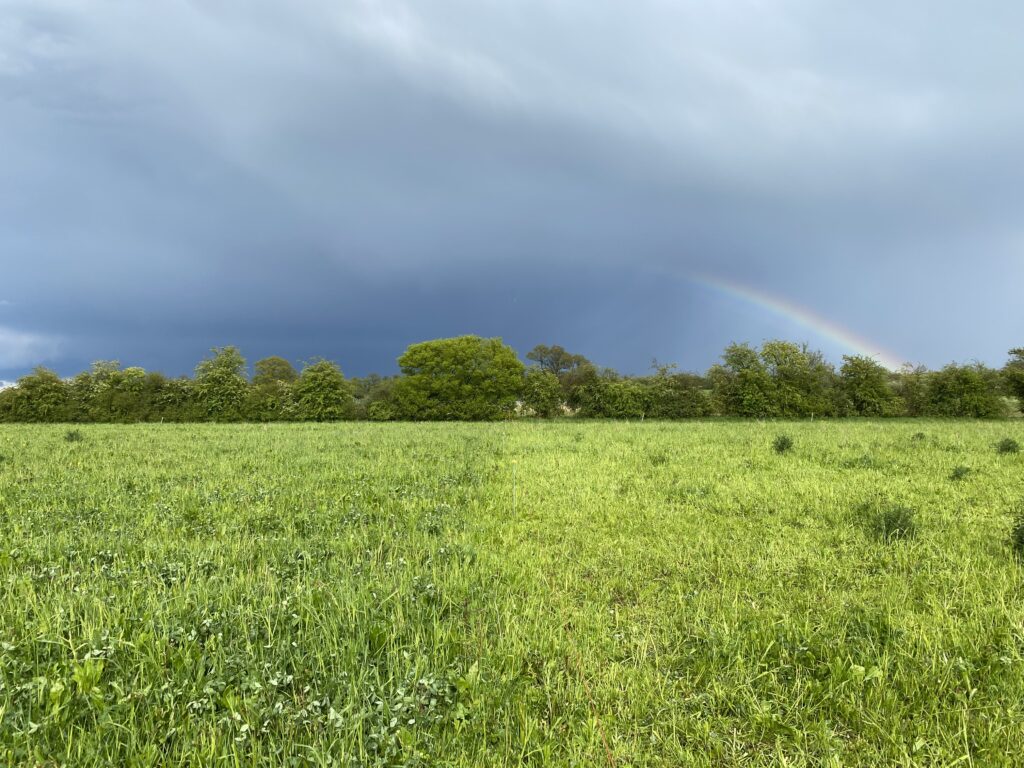
Stuart has never left the farm, other than 3 years at university, studying both at the Royal Agricultural University and Lincoln University in New Zealand. Rebecca has worked as a land agent and auctioneer, and turned to farming in 2016 after the purchase of the Old Hall and 27 acres (the missing piece of the jigsaw which allowed us to expand and diversify the business).
The farm was, prior to 2016, an intensive arable and pig farm. After a decision was made to de-stock the pig herd due to pig health issues in 2016, we chose to diversify into Jersey cows to sell Raw Milk to the public at the Old Hall. Rebecca fell in love with Jersey cows whilst on holiday that summer and the rest, as they say, is history.
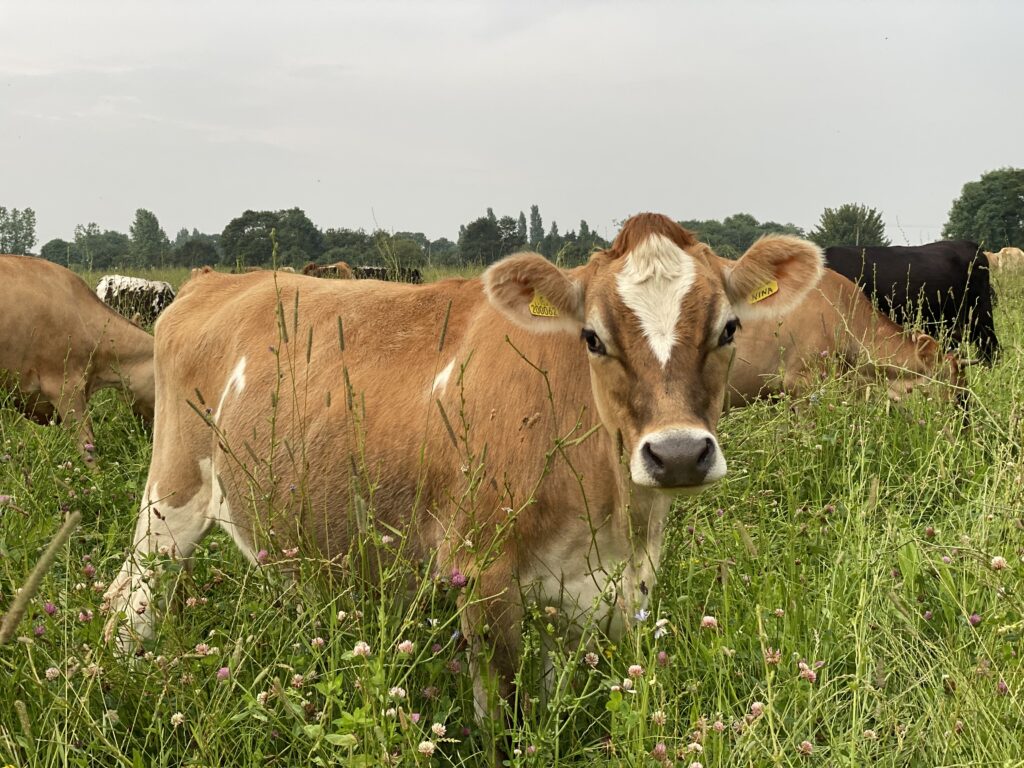
As soon as the cows arrived, we started to put down some of the land into grass and soon learned that it wasn’t as easy as we thought it should be. Fortunately, we heard of Pasture for Life through friends which, via the extensive knowledge of the members, sent us down the right path in terms of planting diverse pastures rather than ryegrass monocultures which is what the conventional wisdom at the time was encouraging us to do.
When we opened our “milk shed” to the public for the first time in April 2017 we were milking 3 cows. Now, we’re milking 45 on a once-a-day system, leaving calves with the cows for 10-12 months. As well as a dual purpose dairy herd, (breeding new milking animals and native breed crosses for beef) we have a larger suckler herd, which takes us in total to 220 head of stock. We fatten our beef finishers on farm (on 100% pasture) and sell everything direct through our farm shop. There is also a small herd of rare breed pigs (fed a soya-free diet), and a flock of various rare and native breed sheep, which are also 100% pasture fed. We also have a pastured poultry flock which, again, is fed a soya free diet.
The more we learned about our ruminants and selling direct to the public, we learned more and more about nutrient density of the end products (meat and dairy), which encouraged us to think more about our farming practices. In 2019 we put the whole farm into Countryside Stewardship with a range of options for pasture (legume rich swards), arable (enhanced over-wintered stubble) and strips for nature including wild birds and pollinators.
The use of the Countryside Stewardship Scheme (CSS) enabled us to step away from intensive arable farming altogether – it had become untenable for us to grow cereals for animal feed and watch our topsoil blowing away so we needed to find a way out. The CSS was it.
We undertook Holistic Management training in 2020 and this has given us a far greater understanding of the positive role that farming can play in the climate crisis, whilst still producing nutrient dense food for local people to eat.
Whilst we do not have a certified Organic status, we do not use any artificial chemicals on the farm, and any bought-in forage for the stock is also chemical free. We are working towards Pasture for Life certification and hope to finalise this process in 2023.
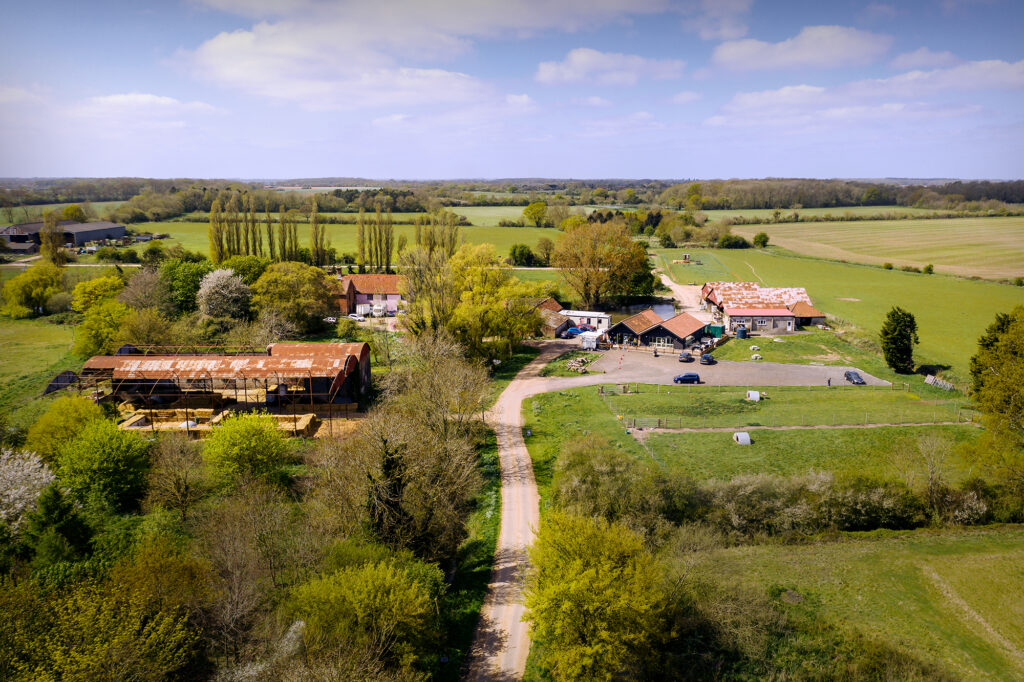
Since converting the farm from arable to pasture, we have seen many challenges – firstly trying to establish legume rich swards in a sterile seed bed and secondly the continual summer droughts. Our initial rye grass monocultures did not cope well with hot summers – but fortunately the introduction of more diverse plant species has made a significant difference to the availability of forage during July-September. The adaptation of “Holistic Planned Grazing” that we learned about during our Holistic Management training has also made a huge difference to the success (compared to failures) of our grazing platform. We have been able to feed more ruminants year after year on the same number of acres at the same time as seeing the amount of biodiversity grow across the farm as a whole. The majority of the beef herd is now out-wintered (approx 85 head), which has significantly reduced our costs and improved the health of the cattle no end. The Pasture for Life forum has helped us link up with other like-minded souls across the UK, and we have also joined a “Mob Grazing” Whatsapp group which is a fantastic place to ask very technical questions.
The business as a whole now incorporates a farm shop, restaurant, butchery and delicatessen as well as the dairy (which is the heart of the business), beef herd, pig herd, chickens for eggs, and sheep for meat.
A general description of the biodiversity on your farm
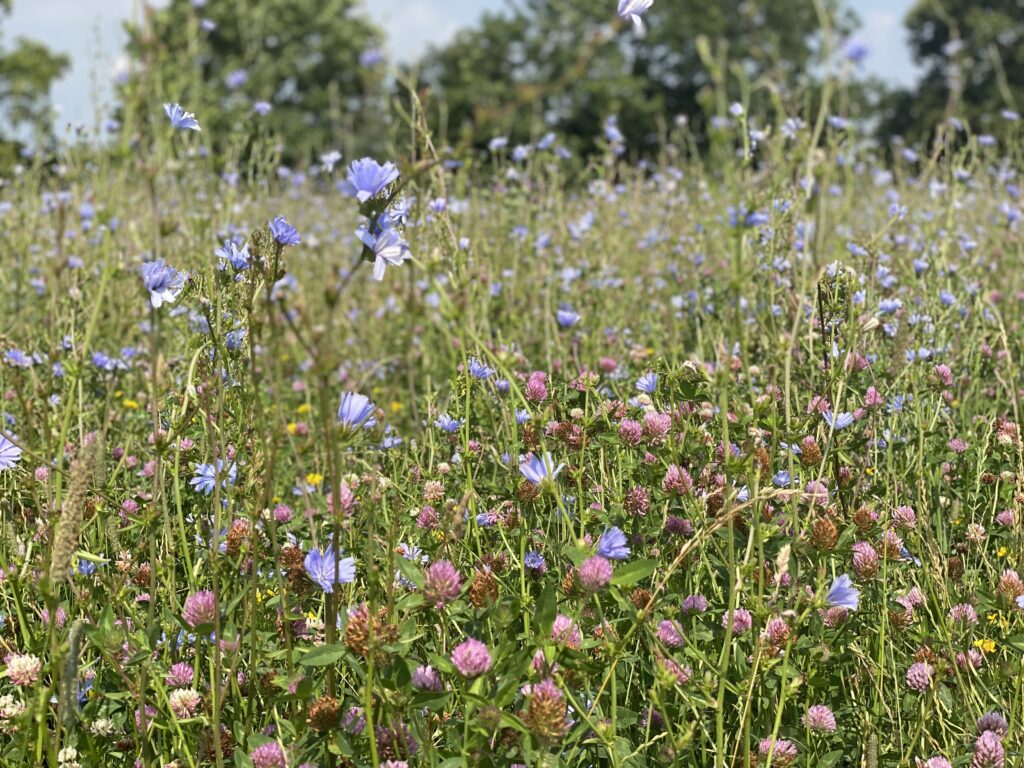
The simplest way of comparing the biodiversity on the farm in 2023 compared to 2017 is to compare chalk and cheese. Whilst we always had decent hedges and some grass tracks, and with a little permanent pasture that had been under grazed for many years, the fields are open to the elements and in the middle of the arable monocultures which were treated to a strict regimen of ploughing, harrowing, drilling and spraying it was like a desert.
The permanent pasture is beginning to have more plant species within it such as birds foot trefoil and cocksfoot and the legume rich swards host over 25 different varieties of plants including chicory, red clover, sheep’s fescue, alike clover, timothy, plantain, yarrow, wild carrot, sainfoin, lucerne, burnet forage herd, sheep’s parsley, and more.
There are several seams running through the farm with AB8 nectar mixes (20 species including lesser knapweed, common bent grass, sheep’s fescue, cornflower, self heal, red campion, ox eye daisy and lady’s bedstraw) and AB9 wild bird food (10 species including linseed, millet, mustard, triticale and some brassicas and sunflowers).
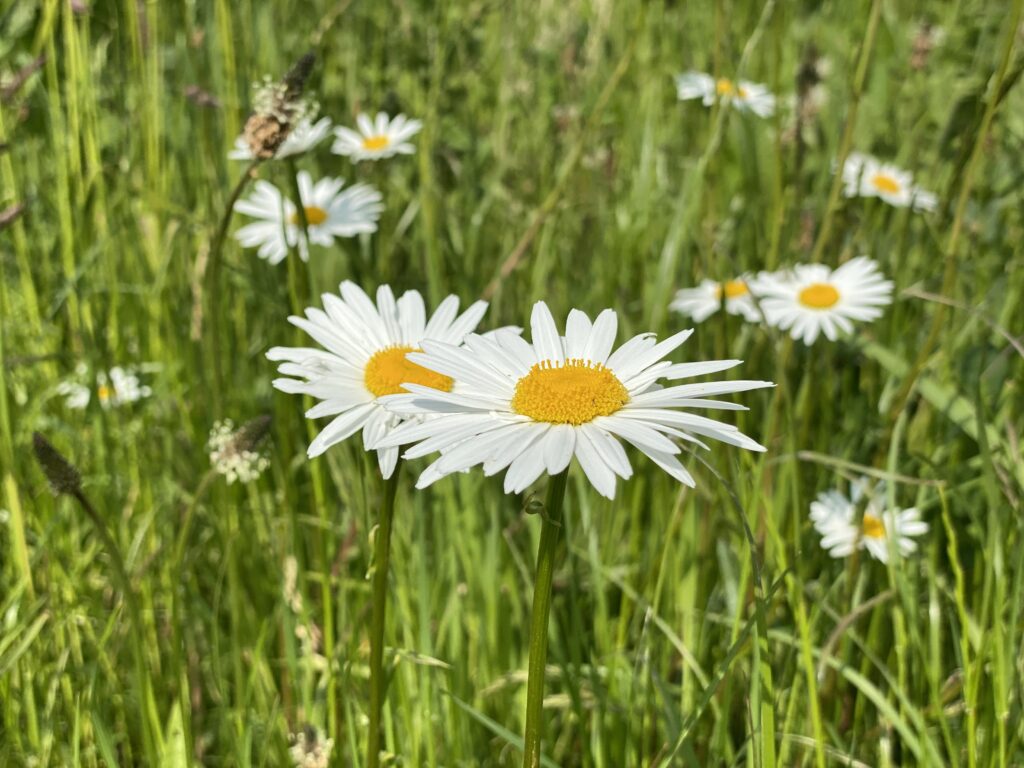
Grasses include meadow grass and perennial rye grass, with other grasses such as Yorkshire fog, meadow fescue, and festulolium now making an appearance.
We have been able to make wrapped hay from the most diverse pastures which has then been fed as winter forage out on the field – rolled out to bale graze by the cattle and at the same time using their mass to help diversify the pastures by spreading seeds from the hay across the fields.
The increase in plant species and removal of insecticides has resulted in an explosion of insect life and therefore bird life. Dawn choruses are loud showy affairs and we now benefit from charms of goldfinches 200 strong, field fairs (not seen before in Stuart’s lifetime), an exultation of skylarks (at least one breeding pair in every field), quarrels of sparrow, and most recently a flock (also known as a “deceit”) of lapwings in the many hundreds – not seen in Stuart’s father’s lifetime. These huge influxes of insect and bird life would not have occurred without the introduction of ruminants. Other birds seen regularly on the farm are barn, tawny and little owls, buzzards, sparrow hawks and red kites, woodcocks, wagtails, starlings, swallows, swifts, cuckoos as well as strong populations of corvids. The extent to which the birds follow the cattle is more noticeable in winter – it’s easier to get a meal when the cattle are bale grazing due to soil disturbance.
Other residents of the farm include stoats, foxes, deer, hares and of course plenty of rabbits.
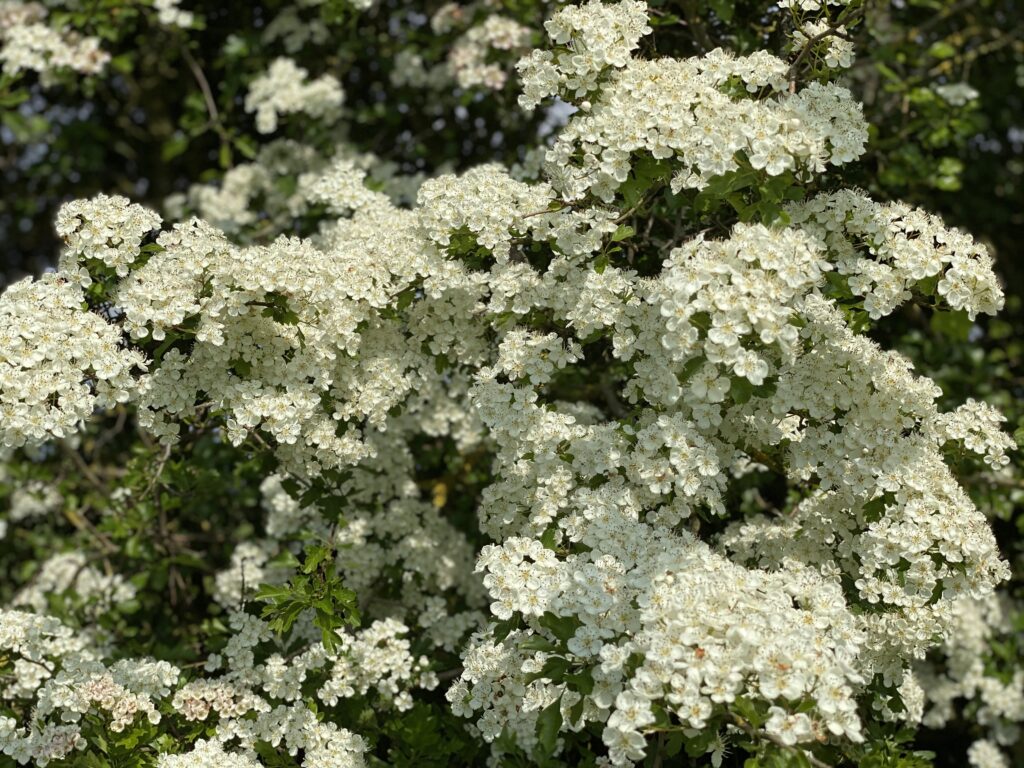
Increased levels of pastures and taller grasses also means an increase in small invertebrates and, having been wormer free for 4 years, we now benefit from 5 species of dung beetles not to mention the water beetles which seem to flourish in the many water troughs now dotted around the farm.



